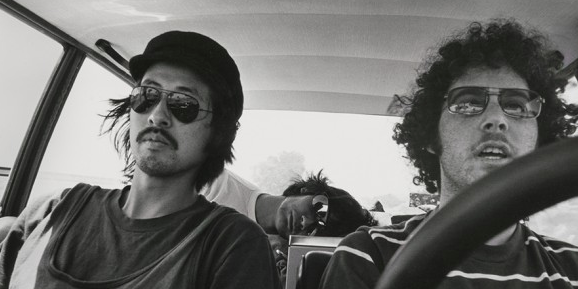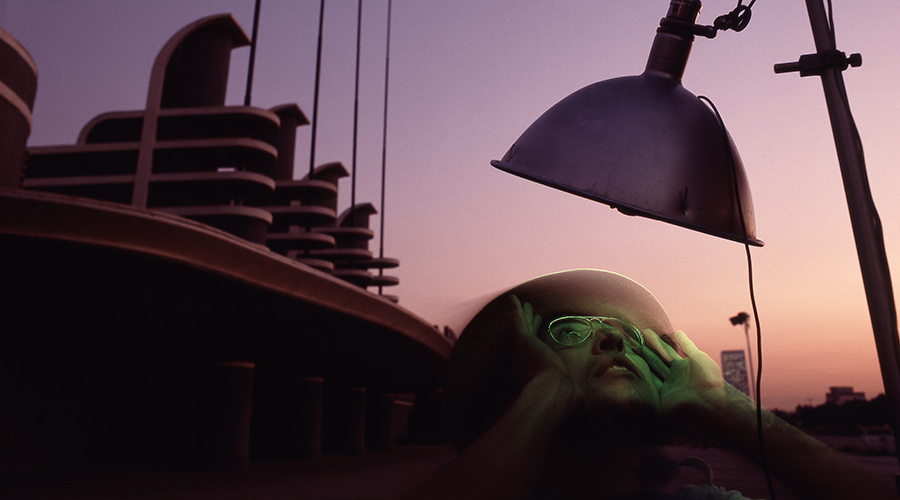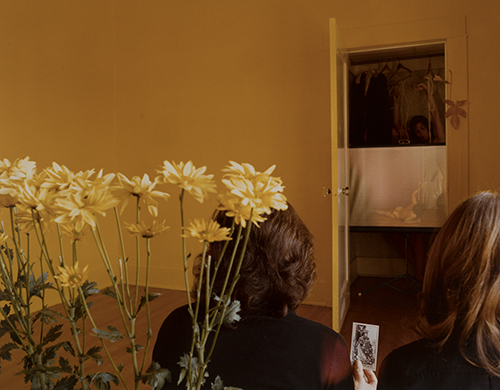


Patrick Nagatani: A Survey of Early Photographs
April 27 – July 28, 2018 University of New Mexico Art Museum, in the Raymond Jonson Gallery 203 Cornell Dr. NE, Albuquerque, New Mexico
THE EXHIBITION:
Curated by Mary Statzer, Curator of Prints and Photographs UNM Art Museum
University of New Mexico Art Museum proudly presents Patrick Nagatani: A Survey of Early Photographs. The exhibition features 50 foundational works, some which have rarely been seen, and makes connections to ongoing series created by Nagatani throughout his career. The photographs in the exhibition predate Nagatani’s move to New Mexico where he was Professor of photography in the Department of Art and Art History at UNM (1987-2007) and the work for which he became known, including the large-scale Polaroids made in collaboration with Andrée Tracey (1983-89) and Nuclear Enchantment (1988-93).
Patrick Nagatani: A Survey of Early Photographs will open with a weekend of special events on April 27 and 28. A reception will be held at the Museum on Friday, April 27 from 4:00 to 6:30 PM and will be followed by the New Mexico premiere of Living in the Story, in Popejoy Hall, a new documentary film about Nagatani’s work told in his own words. Director Lynn Estomin, cinematographer Miguel Gandert, and Andrew Smith, who initiated the project, will be present for an audience Q & A. A panel of former colleagues and students will convene on Saturday, April 28 at 1:30 PM in Northrup Lecture Hall to discuss Nagatani’s enduring influence as an artist and photographic educator.
Patrick Nagatani: A Survey of Early Photographs tracks Nagatani’s development from when he first began creating photographs through and beyond graduate school where he studied with renowned photographer and educator, Robert Heinecken, at UCLA. Already an accomplished technical draftsman and high school teacher at the time, Nagatani was a novice photographer, describing himself as a “sponge” who enthusiastically explored photographic techniques and practices, as well as contemporary art. His growth and expansive interests are evident in the six major bodies of Nagatani’s work that will be on display. The earliest are black and white photographs (1975-76) in which the artist captures ephemeral moments on the streets of Los Angeles or models acting out scenes in enigmatic urban spaces. The series Chroma Room (1977), which was inspired by Nagatani’s interest in theater at the time, represents his first serious attempt to utilize the directorial mode to create a cohesive body of work. In Kosmopolites (1978-80), Nagatani photographed women in a simple studio wearing clothing and masks of their own choosing. Coming close to traditional portraits, they nevertheless present a constructed persona and sense of theater. In 1980, he was hired to photograph an upscale bar mitzvah in Beverly Hills where the rock band Devo entertained the crowd. The results, A Party, Beverly Hills, U.S.A., is a humorous collective portrait of Southern California wealth and fashion in the early-1980s. Nagatani began his long-running series Chromatherapy in 1978. The photographs on display from this period depict imaginative scenes of people receiving colored light therapy, demonstrating the artist’s combined fascination with tableau, color photography, and metaphysical healing. Celestial Earthscapes (1979-80) were Nagatani’s reaction and homage to photographs generated by spacecraft like Mariner. While the set-ups for these photographs appear simple, they address Nagatani’s interest in the occult and spirituality as well as the existential implications of science explaining the ineffable. The series Colorful Cathedrals (1980-83) was a departure for Nagatani. While color was still a major concern, it came in the form of spray paint applied to the surface of collaged black and white photographs. It also marks his early use of Polaroids (SX-70).
The photographs in the exhibition, which come from the permanent collection, were part of a large gift received from Nagatani before he passed away in October 2017.
For more information on the University of New Mexico Art Museum contact Steven Hurley at:
505-277-4001
Image credits: Patrick Nagatani
